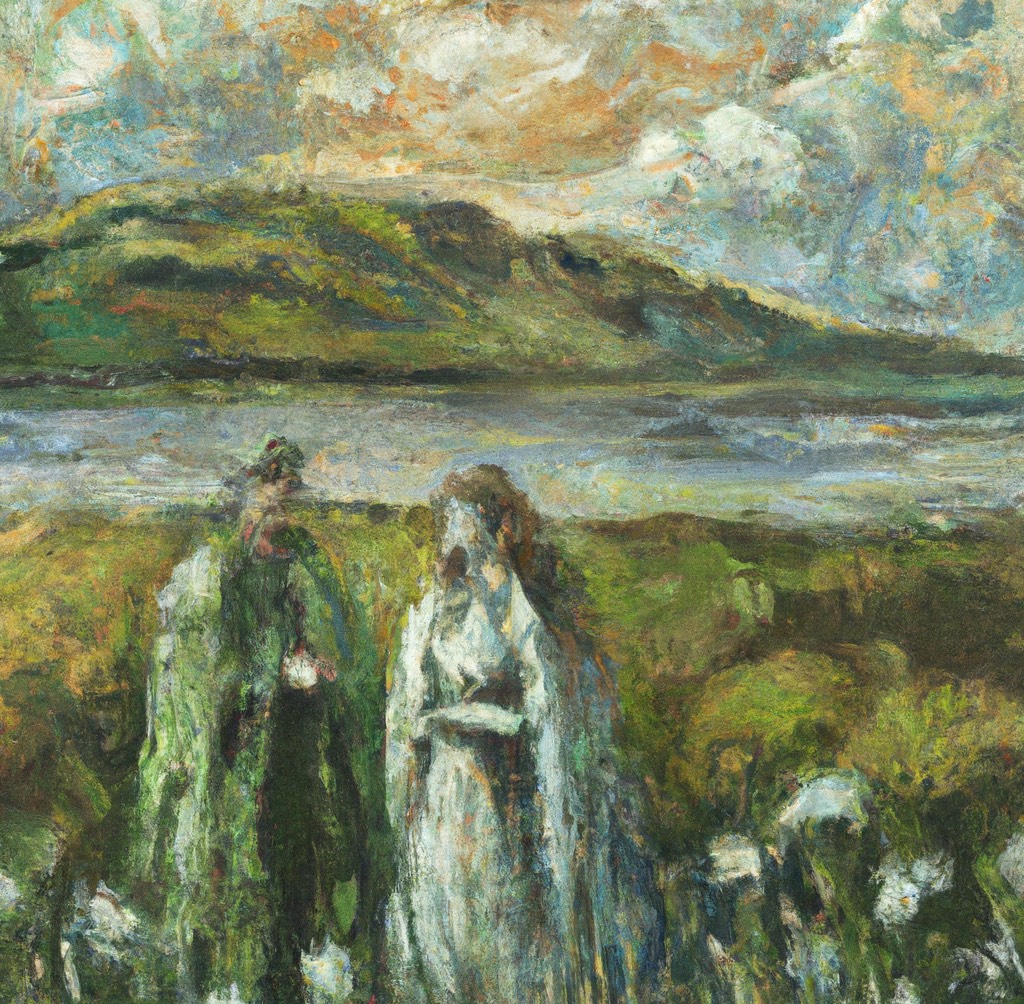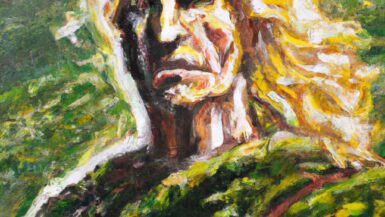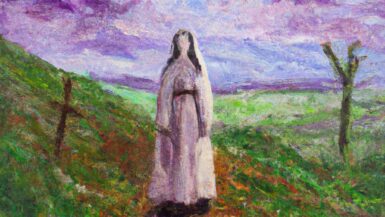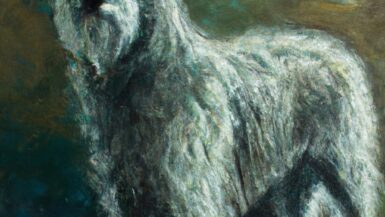The tale of Diarmuid and Gráinne is one of the most enduring stories in Irish mythology. The epic narrative revolves around a complex love triangle involving Fionn Mac Cumhaill, the leader of the Fianna, his most loyal warrior Diarmuid Ua Duibhne, and the beautiful Gráinne, and is filled with themes of love, loyalty, and betrayal. This article will explore the rich history of this legendary tale, delving into the origins of the characters, their intertwining fates, and the lasting impact of their story.
The Characters in the Tale
Gráinne
Gráinne, the daughter of Cormac mac Airt, the High King of Ireland, is the central figure in the tale. Known for her beauty and boldness, Gráinne is initially betrothed to Fionn Mac Cumhaill, but she falls in love with the young and handsome Diarmuid Ua Duibhne.
Diarmuid Ua Duibhne
Diarmuid Ua Duibhne, a prominent member of the Fianna, is renowned for his bravery, loyalty, and good looks. He is best known for his “love spot,” a magical mark given to him by a young girl, which made him irresistible to women.
Fionn Mac Cumhaill
Fionn Mac Cumhaill, the legendary leader of the Fianna, is a central figure in Irish mythology. In this tale, he is depicted as a conflicted character, torn between his loyalty to his friend Diarmuid and his love for Gráinne.
The Love Triangle
The Betrayal
The story begins with the betrothal feast of Gráinne and Fionn. Unwilling to marry the much older Fionn, Gráinne enchants the guests and puts them to sleep. She then places a geis (a binding spell) on Diarmuid, compelling him to elope with her. This act sets off a long and arduous pursuit by Fionn and the Fianna.
The Pursuit
Diarmuid and Gráinne spend many years on the run, during which their love for each other deepens. Despite the geis, Diarmuid is conflicted, as he values his loyalty to Fionn. However, he ultimately falls genuinely in love with Gráinne, further complicating the dynamics of the love triangle.
Reconciliation and Betrayal
After years of pursuit, a truce is finally brokered, allowing Diarmuid and Gráinne to return home. They live in peace for some time, and Gráinne bears Diarmuid several children. However, the specter of Fionn’s jealousy and desire for revenge looms over their happiness.
The Tragic End
Diarmuid’s Fate
The tale reaches its climax when Diarmuid is fatally wounded by a wild boar during a hunt organized by Fionn. It is said that Fionn possesses the power to heal Diarmuid by offering him water from his hands, but he lets the water slip through his fingers twice, allowing Diarmuid to die.
Gráinne’s Grief
Following Diarmuid’s death, Gráinne is left grief-stricken. The story ends tragically, with Gráinne mourning the loss of her beloved and living the rest of her life in sorrow and regret.
The Legacy of the Tale
Influence on Irish Folklore
The story of Diarmuid and Gráinne has left an indelible mark on Irish folklore. It has been passed down through the generations, evolving with each retelling. It is a tale that portrays the complexity of human emotions and relationships, with themes of love, loyalty, and betrayal that continue to resonate today.
Diarmuid and Gráinne in Modern Literature
The saga of Diarmuid and Gráinne has been adapted and reimagined in contemporary literature. Notable examples include “The Pursuit of Diarmuid and Gráinne” by Standish O’Grady, which offers a prose retelling of the tale, and “The Legend of Diarmuid and Gráinne” in James Stephens’ “Irish Fairy Tales.” The story has also been interpreted in modern Irish poetry, such as in “Gráinne’s Speech to Diarmuid” by Nuala Ní Dhomhnaill.
Diarmuid and Gráinne in Popular Culture
The legend of Diarmuid and Gráinne has found its way into mainstream popular culture, featuring in comic books, video games, and television series. The tale’s themes of love and betrayal make it a popular choice for adaptation. For instance, Diarmuid is a character in the Fate/ series of Japanese visual novels and anime, where he is portrayed as a loyal knight grappling with his tragic past.
The tale of Diarmuid and Gráinne is a timeless narrative that continues to captivate audiences with its complex characters and emotional depth. It is a story that speaks to the human experience, exploring the tension between love and duty, the consequences of betrayal, and the tragedy of lost love. As such, it remains one of the most compelling stories in Irish mythology, a testament to its enduring appeal and relevance.






Leave a reply